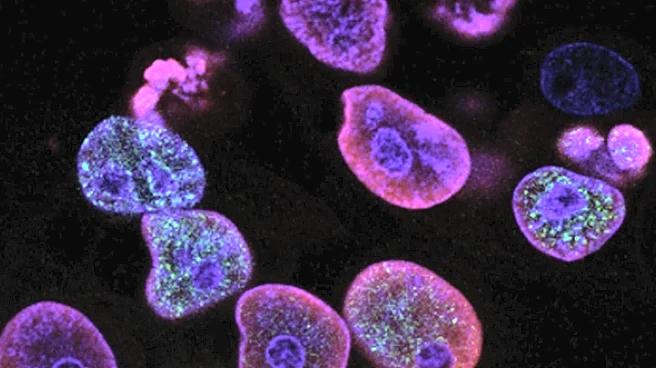What's Happening?
Researchers have developed a smart polymer film based on hydrogen-bonded organic frameworks (HOFs) that is stimuli-responsive and capable of ammonia sensing. The film incorporates metronidazole (MET) and anthocyanins (ACN), which are bioactive pigments sensitive to pH changes. The polymer's structure was characterized using techniques such as Fourier-transform infrared spectroscopy and 1H NMR, confirming the presence of hydrogen bond interactions. The film demonstrates antibacterial and antioxidant properties, making it suitable for wound dressing applications. It can detect ammonia levels, which are indicative of wound infections, by changing color in response to pH variations.
Why It's Important?
The development of this smart polymer film is significant for the healthcare industry, particularly in wound care management. The ability to detect ammonia levels through color changes provides a non-invasive method for monitoring wound infections, potentially improving patient outcomes. The film's antibacterial and antioxidant properties further enhance its utility in preventing infections and promoting healing. This innovation could lead to more effective wound dressings, reducing the need for external devices and simplifying the monitoring process for healthcare providers.
What's Next?
Further research and testing are needed to assess the effectiveness of the polymer film in clinical settings, particularly for diagnosing infections in infants. The film's potential for broader applications in chronic wound management and its ability to visually indicate infection status without external devices could lead to its adoption in healthcare facilities. Researchers may explore additional modifications to enhance the film's stability and responsiveness to environmental factors.
Beyond the Headlines
The use of hydrogen-bonded organic frameworks in the polymer film highlights the potential for advanced materials in medical applications. The film's design, inspired by DNA formation, leverages pH and temperature changes to facilitate drug release, offering a novel approach to wound care. This development underscores the importance of interdisciplinary research in creating innovative solutions for healthcare challenges.











